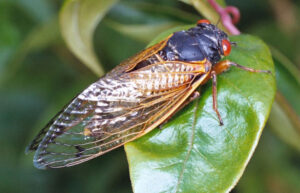In an event that’s either wildly exciting or singularly troubling (or some combination of both), scientists have engineered the world’s first self-replicating “living” robots. The creatures are both capable of spawning new versions of themselves and fully controllable by programming.
The technology — or life — constitutes the most recent evolution of “xenobots”, the world’s first robots created from living cells. Researchers at the University of Vermont first used stem cells from frogs to accomplish the feat in January 2020.
Xenobots: the building blocks of robot life
“These are novel living machines,” University computer scientist and roboticist Joshua Bongard stated when his team first created xenobots. He went on to confirm the novelty: “They’re neither a traditional robot nor a known species of animal. It’s a new class of artifact: a living, programmable organism.”
To fabricate the creatures, an algorithm simulated the results of combining a few hundred of the embryonic frog cells at random. The scientists then programmed the algorithm to generate desired outcomes: locomotion, for instance.
After months of optimization, the team selected a few of the most promising designs to build — using microscopic forceps and electrodes to parse out actual living cells. (The YouTube video below offers several cogent visual aids to explain the whole process.)
Xenobots, which take their name from their African clawed frog (Xenopus laevis) progenitors, were the result. Skin cells worked as structural scaffolding; heart cell contractions propelled movement.
From there, the team configured them into different shapes (like the oddly cute Pac Man below) to suit various purposes. Experiments performed to determine their programmable capabilities (in fluid) have proved fascinating.

A xenobot (red) and non-aggregated stem cell (green). Photo: Douglas Blackiston
How xenobot reproduction works
Now, Bongard and his colleagues have given their bizarre minions another essential marker of life. Xenobots now reproduce — though not via any of the conventional means.
Instead, researchers discovered that if they simply put enough of them together in a petri dish, their collective movements generated a cloud of loose frog cells in the solution. Once enough of those cells accumulated, the team observed that an aggregated heap of about 50 cells became the original organisms’ de facto offspring.
The consolidated group could swim by itself — and as it did so among the rest of the creatures in the dish, it began to generate its own offspring.

Xenobot reproduction as seen through a microscope. The creatures’ natural movement creates clumps of loose cells, which aggregate into offspring. Photo: University of Vermont
It’s called spontaneous kinematic self-replication, and it’s been observed before — but never in living multicellular systems.
According to Bongard’s team, the xenobots have adopted it with impressive (or alarming) efficiency.
“This form of perpetuation, previously unseen in any organism, arises spontaneously over days rather than evolving over millennia,” the researchers observed in a recent paper.
They also noted that they could accelerate the effect with artificial intelligence. Using AI to simulate conditions that would promote reproduction proved feasible. But the paper also explains that the organisms’ ability to reproduce self-kinematically without genetic modification highlights biological life’s radical adaptability.
Implications: What on earth will robotic life forms do?
What it will mean in the world the rest of us live in is, for now, unclear. For now, xenobots are basic and relatively harmless. But they might prove to be the ancestors of highly efficient bio-weapons or androids that experience the biological urges to survive and reproduce.
Equally likely, though, they’ll be utilized to help mitigate some of our most pressing global threats. Their biodegradability is an obvious advantage for applications like pollution clean-up.

The Pacific Trash Vortex. Researchers think xenobots could help reduce ocean plastics.
“We can imagine many useful applications of these living robots that other machines can’t do, like searching out nasty compounds or radioactive contamination, gathering microplastic in the oceans, traveling in arteries to scrape out plaque,” Tufts University biologist Michael Levin said.
Bongard’s team may be a long way away from deploying xenobots outside the lab — they can’t eat, and programming is a work in progress. But the closing gist of the paper indicates that opening your mind to the idea of coexistence with living robots may be the best course of action. After all, reproduction is the gateway to evolution.
The research “suggests that future technologies may, with little outside guidance, become more useful as they spread,” and the team explains “that life harbors surprising behaviors just below the surface, waiting to be uncovered.”






